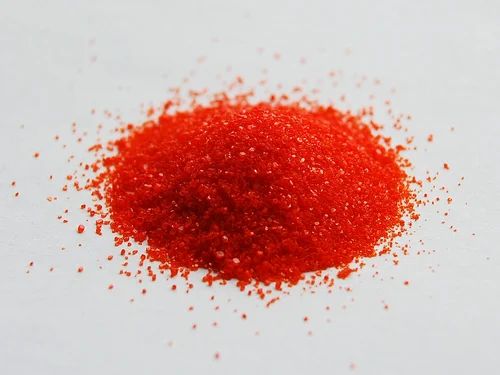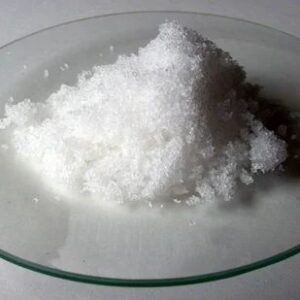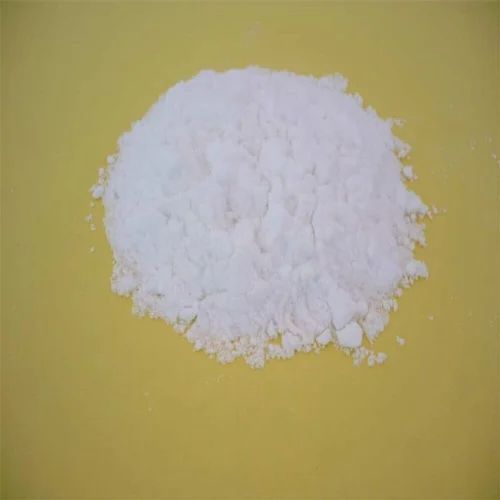Potassium Dichromate Crystal: The Comprehensive Product Guide
Potassium dichromate crystal, with the chemical formula K2Cr2O7K_2Cr_2O_7, is an inorganic compound that appears as vibrant orange-red crystals. This highly soluble compound is recognized for its powerful oxidizing properties and finds extensive applications in various industries, including chemical manufacturing, photography, and laboratory settings. As a key reagent and industrial chemical, potassium dichromate crystal plays a crucial role in numerous processes. In this detailed product description, we will explore the properties, applications, benefits, and safety considerations of potassium dichromate crystal, highlighting its significance across multiple fields.
Chemical Properties
Composition and Structure
Potassium dichromate is produced through the oxidation of potassium chromate and is typically encountered as bright orange crystals or a crystalline powder. The molecular weight of potassium dichromate is approximately 294.19 g/mol.
Physical Characteristics
- Appearance: Vibrant orange-red crystalline solid
- Molecular Weight: 294.19 g/mol
- Solubility: Highly soluble in water; slightly soluble in alcohol
- pH: Acidic in solution
- Melting Point: Decomposes upon heating
These properties make potassium dichromate crystal suitable for a variety of applications across different industries.
Applications of Potassium Dichromate Crystal
1. Chemical Manufacturing
Potassium dichromate plays a vital role in chemical manufacturing:
- Reagent: It is widely used as a reagent in various chemical reactions, particularly for oxidation processes. Its strong oxidizing properties make it effective in synthesizing a variety of organic compounds.
- Catalyst: Potassium dichromate can serve as a catalyst in certain chemical reactions, facilitating the conversion of reactants to products more efficiently.
2. Analytical Chemistry
In analytical chemistry, potassium dichromate is employed for:
- Titration: It is commonly used as a titrant in redox titrations, particularly for determining the concentration of reducing agents in solutions.
- Indicator: Potassium dichromate can act as an indicator in various chemical reactions, helping to visualize endpoint changes during titrations.
3. Photography
In the photography industry, potassium dichromate is utilized for:
- Developing Agents: It is used in certain photographic processes to enhance the quality of images. Its oxidizing properties help develop film and photographic papers.
- Pigment Production: Potassium dichromate is also used in the production of pigments for dyes and inks, contributing to vibrant colors in various applications.
4. Wood Preservation
Potassium dichromate is employed in wood preservation:
- Wood Treatment: It acts as a wood preservative, protecting wood from decay, insects, and fungal growth. This treatment helps prolong the life of wooden structures and furniture.
5. Laboratory Use
In laboratory settings, potassium dichromate serves several important functions:
- Standard Solution: It is used to prepare standard solutions for various analytical procedures, ensuring accurate and reliable results.
- Oxidizing Agent: Potassium dichromate is frequently used as an oxidizing agent in organic synthesis, enabling the conversion of alcohols to ketones and aldehydes.
Advantages of Using Potassium Dichromate Crystal
1. Strong Oxidizing Agent
One of the primary advantages of potassium dichromate is its strong oxidizing capabilities. This property makes it highly effective in various chemical reactions, particularly in organic synthesis and analytical chemistry.
2. Versatility
Potassium dichromate is a versatile compound with applications across multiple industries, including chemical manufacturing, photography, wood preservation, and laboratory analysis. Its multifunctional properties make it a valuable resource for professionals.
3. Cost-Effectiveness
Compared to other chemical reagents, potassium dichromate is often more affordable, providing significant benefits without requiring large quantities. This makes it an economical choice for manufacturers and researchers alike.
4. Reliability in Analytical Procedures
Potassium dichromate is widely used in analytical chemistry due to its reliability and effectiveness as a titrant and oxidizing agent. This ensures accurate results in various laboratory analyses.
How to Use Potassium Dichromate Crystal
1. In Chemical Manufacturing
When using potassium dichromate in chemical applications:
- Dosage: The recommended dosage can vary depending on the specific reaction. For oxidation processes, it is typically used in concentrations ranging from 1% to 5%.
- Incorporation: It should be mixed thoroughly with other reactants to ensure even distribution and optimal results.
2. In Analytical Chemistry
For analytical purposes:
- Titration Procedures: Use potassium dichromate as a titrant in redox titrations, following established protocols to ensure accurate measurements.
- Indicator Application: Incorporate potassium dichromate as an indicator in specific chemical reactions to visualize endpoint changes.
3. In Photography
In photographic applications:
- Preparation: Use potassium dichromate in developing solutions according to specific formulas to achieve desired results in image quality and stability.
- Storage: Store potassium dichromate solutions in cool, dark places to maintain effectiveness.
4. In Wood Preservation
For wood treatment applications:
- Application: Apply potassium dichromate solutions to wood surfaces, ensuring thorough coverage to maximize protection against decay and insects.
- Safety Precautions: Follow safety guidelines when handling and applying potassium dichromate to minimize exposure risks.
5. In Laboratory Settings
When using potassium dichromate in laboratory experiments:
- Preparation: Prepare solutions according to the required concentrations for specific analyses, ensuring proper handling and safety measures.
- Monitoring: Regularly assess the effectiveness of reactions to ensure accurate results.
Safety and Handling
1. Toxicity
Potassium dichromate is classified as a hazardous substance and is known to be toxic. It has been linked to various health concerns, including respiratory issues and skin irritation. It is crucial to handle this compound with care.
2. Protective Measures
When handling potassium dichromate crystals, it is essential to:
- Wear Protective Gear: Use gloves, goggles, and appropriate lab attire to minimize exposure risks.
- Ensure Proper Ventilation: Work in a well-ventilated area or use fume hoods to avoid inhaling dust or fumes.
3. Storage
Store potassium dichromate crystals in a cool, dry place away from direct sunlight and moisture. Ensure that containers are tightly sealed to prevent contamination and degradation.
Environmental Considerations
Due to its toxicity, potassium dichromate should be disposed of according to local regulations regarding hazardous materials. Always adhere to guidelines to minimize environmental impact and ensure safety.
Conclusion
Potassium dichromate crystal is a versatile and essential compound widely used in chemical manufacturing, analytical chemistry, photography, wood preservation, and laboratory settings. Its unique properties, including its strong oxidizing capabilities and effectiveness as a reagent, make it an invaluable resource for professionals across various industries.
When purchasing potassium dichromate, choose reputable suppliers that provide high-quality products and detailed safety data sheets. Understanding its applications, benefits, and safety measures will help you maximize the potential of this remarkable compound in your projects.
Whether you’re a manufacturer looking to enhance product quality, a chemist seeking reliable reagents, or a woodworker aiming to protect wooden structures, potassium dichromate crystal can meet your needs. Embrace the advantages of this compound and unlock new possibilities in your field!





Reviews
There are no reviews yet.